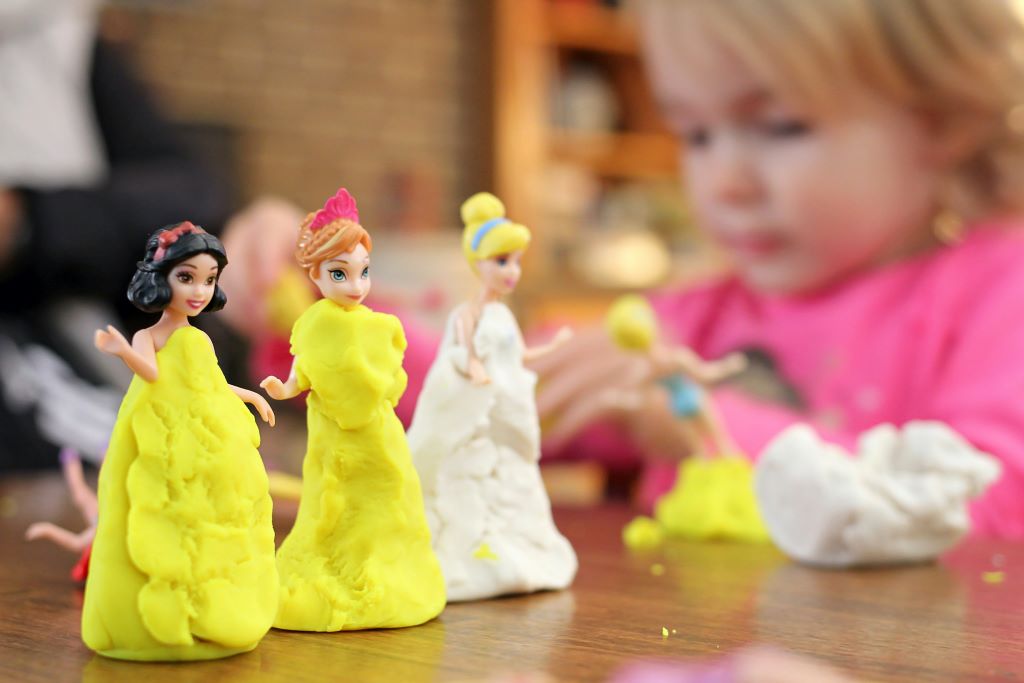
The emergent curriculum is an organic teaching approach that helps in the development of young children. This approach, which is still relatively new and is constantly growing and evolving, is currently being introduced by teachers in the early childhood settings.
The emergent curriculum promotes collaboration between children and educators, giving both a voice. Teachers are encouraged to build on the children’s likes and interests so as to promote responsiveness. In such settings, the educator takes on the role of a facilitator, observes what would be happening, and gives the children a chance for more discovery, deeper digging, and further knowledge construction by planning their activities based on the children’s interests and worries. This encourages genuine questioning, as both the children and educators become co-learners, who try to comprehend different aspects of life. Projects done in school are never pre-determined, but are developed in close collaboration with the children.
The benefits of following the emergent curriculum approach
- Gives the children a voice
- Gives the children control on outcome
- Empowerment
- Confidence
- Teaches the concept of collaboration
- Explores children’s socially relevant ideas
- Meaningful and intellectually engaging
- Enhances the child’s observative and creative skills
- Responds to the children’s interests
- Links learning with prior learning and real-life experiences
- Enables self-criticism and self-reflection at a very young age
How can you implement the emergent curriculum at home with your children?
A particular well known youtuber who I’ve been following for a couple of years implements the emergent curriculum approach at home with her 2 year old child. Her boy showed a lot of interest in different types of vehicles, so his mother decided to give the child a variety of automobile toys and taught him songs related to the subject. She took him to places where he could see his favourite vehicles. Additionally, he was also presented with multiple activities related to his area of interest. In short, once he started showing interest, his mother started setting up different experiences to help him build on his knowledge – following the emergent curriculum, possibly unknowingly.
She was also flexible in her approach as when he started showing interest in a particular type of truck, she focused mainly on it until the child started showing interest in another type. Moreover, she was clearly listening and observing her child and also reflecting on what areas could be developed further and how the experience could be extended.
To implement the emergent curriculum at home with your child, you can start by observing your child’s likes and interests, and then create fun and innovative experiences to broaden existing knowledge.
Last summer I had the opportunity to care for my sisters for a number of days. Based on the knowledge I had been gathering whilst in my first year following a Degree in Early Childhood Education and Care, I decided to apply the emergent curriculum in my activity planning, which I did based on my youngest sister’s interests at that particular time, specifically Elsa from Frozen and Oh from Home. We ended up creating a ‘snow bottle’, which consisted of water, food colouring dye (she chose her favourite colour – blue), pompoms, star sequence, etc. We created the two characters life-size out of big cardboard boxes, made ‘Elsa cookies’, and an Olaf cake, and many other such activities. While focusing on Oh, she started showing interest in the so-called Slushious car, so we created it using a big cardboard box and recyclable materials. Next, she also started becoming interested in the movie Inside Out, so the next activities I created were based on this movie’s characters.
Eventually, due to the summer heat my youngest sister mentioned water games, and although we had never organised those before, I tried my best to create a fun day on the roof. The water games I organised were child-led, which, as mentioned earlier, is a characteristic of the emergent curriculum. Crafts that she created were placed where they can be seen so she could reflect on what she had done as well as what she can do better, promoting critical thinking.
A year down the road even my mother is applying the emergent curriculum with my sister, allowing her to be creative in her own way. This means that if my sister wants to draw the sky purple, she is supported and encouraged to do so. Eventually mum chose to home-school my sister due to the covid-19 pandemic, and I could clearly see that she started incorporating play when teaching her. Not only was my sister excited to be home-schooled, but she started showing great improvement too.
Without doubt it is not easy moving from one method of learning to another. It can be quite difficult sometimes to hold in the words ‘no, draw the sky blue’ or ‘the grass should be green’. However, once you try this approach, you will notice that it does not only empower your child with intellectual courage and confidence whilst building meaningful and productive lives, but it also keeps you on your toes seeing your child evolve into a creative and confident being.
References
Ludman, E. K. (1983). The Emergent Curriculum.10.4135/9781483340333.n141
Stacey, S. (2008). Emergent Curriculum in Early Childhood Settings: From Theory to Practice. Redleaf Press.
Wien, C. A. (2015). Emergent Curriculum in the Primary Classroom: Interpreting the Reggio Approach in Schools. Teachers College Press.

Christianne Marie Galea is currently reading for a B.A (Hons) in Early Childhood Education and Care at the Faculty of Education, University of Malta, which will lead her to become an early childhood educator. Her wish is to create an environment in which her class children will feel comfortable sharing their thoughts and emotions while expressing themselves freely.
In her free time Christianne loves creating art through mixed mediums such as water colours, acrylic, pencil colours and aquarelles. She also loves listening to music, acting and spending time with her sisters.
Click here to check out Christianne’s full bio as well as a list of all her Wham published articles





